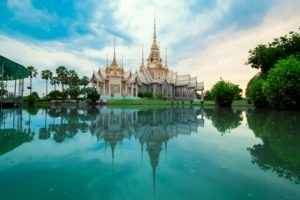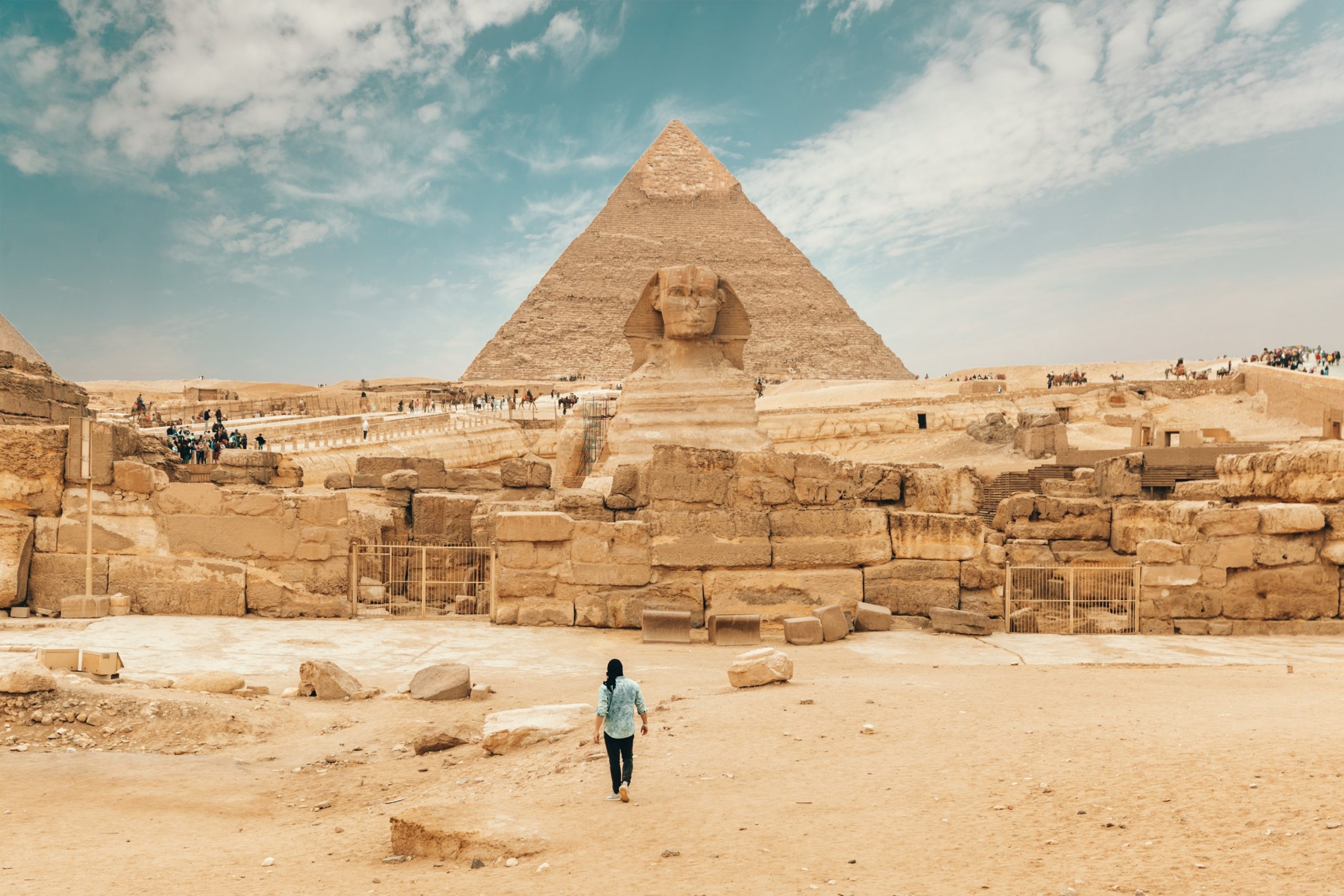Tourism plays a vital role in preserving culture by empowering communities and fostering cultural exchange. SIXT.VN understands the importance of cultural preservation and offers tailored travel experiences in Vietnam that contribute to this vital mission. Discover how responsible tourism can protect cultural heritage and explore the best of Vietnamese culture with SIXT.VN’s expertly curated tours, cultural immersion, and sustainable travel practices.
1. What Role Does Tourism Play in Preserving Cultural Heritage?
Tourism plays a pivotal role in preserving cultural heritage by providing economic incentives for communities to maintain traditions, fostering cultural exchange, and raising awareness about the importance of preserving cultural sites. According to research from the United Nations World Tourism Organization (UNWTO) in 2019, sustainable tourism directly contributes to the conservation of natural and cultural heritage by generating revenue for protection efforts.
Tourism acts as a catalyst for cultural preservation in several key ways:
- Economic Incentives: Tourism generates income for local communities, which can then be reinvested into preserving cultural sites, traditions, and practices. For example, revenue from entrance fees to historical landmarks can be used to fund restoration projects and cultural programs.
- Cultural Exchange: Tourism promotes interaction between visitors and local communities, leading to a greater understanding and appreciation of different cultures. This exchange can encourage the continuation of traditional arts, crafts, and performances.
- Awareness and Education: Tourism raises awareness among visitors and local communities about the importance of preserving cultural heritage. Educated travelers are more likely to support conservation efforts and respect cultural norms.
- Infrastructure Development: Tourism can lead to the development of infrastructure that supports cultural preservation, such as museums, cultural centers, and interpretation sites.
SIXT.VN is dedicated to promoting responsible tourism practices that support the preservation of Vietnamese culture. We carefully curate our tours to ensure that they benefit local communities and minimize negative impacts on cultural sites.
2. How Does Community Involvement in Tourism Benefit Cultural Preservation?
Community involvement in tourism significantly benefits cultural preservation by fostering a sense of ownership and pride, ensuring that tourism activities are culturally sensitive, and empowering local residents to become active participants in safeguarding their heritage. According to a study by the World Bank in 2020, community-based tourism models are more effective in preserving cultural heritage because they prioritize the needs and values of local communities.
Here’s how community involvement contributes to cultural preservation:
- Sense of Ownership: When local communities are involved in tourism planning and management, they develop a sense of ownership over their cultural heritage. This motivates them to protect and preserve it for future generations.
- Cultural Sensitivity: Community involvement ensures that tourism activities are culturally sensitive and respect local traditions and values. This helps to avoid the commodification of culture and promotes authentic experiences for visitors.
- Empowerment: Community-based tourism empowers local residents by providing them with economic opportunities and decision-making power. This strengthens their capacity to manage and protect their cultural heritage.
- Knowledge Transfer: Community involvement facilitates the transfer of traditional knowledge and skills from elders to younger generations. This ensures that cultural practices are passed down and sustained over time.
SIXT.VN actively collaborates with local communities in Vietnam to develop tourism products that showcase their cultural heritage in a respectful and sustainable manner. Our tours are designed to support local businesses and provide authentic cultural experiences for our guests.
 Vietnamese Woman Weaving Silk
Vietnamese Woman Weaving Silk
3. What Are Some Examples of Tourism Helping to Preserve Culture?
Many successful examples demonstrate how tourism can help preserve culture, including the preservation of historical sites in Hoi An, Vietnam, the revitalization of traditional crafts in Sapa, Vietnam, and the support for indigenous cultures through ecotourism in the Mekong Delta. A report by UNESCO in 2021 highlights these examples as best practices in cultural tourism.
Here are some specific examples:
- Hoi An, Vietnam: Tourism has played a crucial role in preserving the ancient town of Hoi An, a UNESCO World Heritage Site. Revenue from tourism has been used to restore historical buildings and promote traditional arts and crafts.
- Sapa, Vietnam: Tourism has helped to revitalize traditional crafts in Sapa, a mountainous region in northern Vietnam. Local communities have developed homestays and workshops to showcase their weaving, embroidery, and other handicrafts to visitors.
- Mekong Delta, Vietnam: Ecotourism in the Mekong Delta supports indigenous cultures by providing economic opportunities for local communities and promoting sustainable practices. Visitors can learn about traditional farming methods, cuisine, and music.
SIXT.VN offers immersive tours that take you to these cultural destinations in Vietnam, allowing you to experience the richness and diversity of Vietnamese culture while contributing to its preservation.
4. How Can Tourists Contribute to Cultural Preservation?
Tourists can actively contribute to cultural preservation by choosing responsible tour operators, respecting local customs, purchasing local products, and participating in cultural activities that support local communities. According to TripAdvisor in 2022, travelers are increasingly seeking authentic cultural experiences and are willing to pay more for tours that benefit local communities.
Here are some ways tourists can make a positive impact:
- Choose Responsible Tour Operators: Select tour operators that prioritize sustainable tourism practices and work closely with local communities.
- Respect Local Customs: Learn about local customs and traditions before your trip and be mindful of your behavior. Dress appropriately, ask permission before taking photos, and avoid disrespectful actions.
- Purchase Local Products: Support local artisans and businesses by purchasing locally made products. This helps to generate income for local communities and preserve traditional crafts.
- Participate in Cultural Activities: Engage in cultural activities such as traditional dances, cooking classes, and craft workshops. This provides an opportunity to learn about local culture and support local performers and artisans.
- Leave No Trace: Practice responsible travel by minimizing your environmental impact. Dispose of waste properly, conserve water and energy, and avoid disturbing natural habitats.
SIXT.VN encourages our guests to be responsible travelers and provides them with information and resources to help them make a positive impact on Vietnamese culture and the environment.
 Hoi An Ancient Town
Hoi An Ancient Town
5. What Are the Potential Negative Impacts of Tourism on Culture?
Despite the benefits, tourism can also have negative impacts on culture, including the commodification of cultural practices, the loss of authenticity, and the displacement of local communities. A study by the Cultural Heritage Counts for Europe Consortium in 2015 highlights the potential risks of unsustainable tourism development.
Here are some potential negative impacts:
- Commodification of Culture: When cultural practices are commodified for tourism purposes, they can lose their original meaning and significance. This can lead to the creation of staged performances and souvenir shops that cater to tourist expectations rather than reflecting authentic culture.
- Loss of Authenticity: Tourism can lead to the erosion of traditional ways of life and the adoption of Westernized values. This can result in the loss of unique cultural identities and the homogenization of cultures.
- Displacement of Local Communities: Tourism development can lead to the displacement of local communities from their ancestral lands. This can disrupt traditional social structures and livelihoods, leading to social and economic problems.
- Environmental Degradation: Tourism can contribute to environmental degradation through increased waste, pollution, and resource depletion. This can damage cultural landscapes and threaten cultural heritage sites.
SIXT.VN is committed to mitigating these negative impacts by promoting responsible tourism practices that respect local cultures and protect the environment. We work closely with local communities to ensure that tourism benefits them and does not harm their cultural heritage.
6. How Can Sustainable Tourism Help Protect Cultural Heritage?
Sustainable tourism is a holistic approach that aims to minimize the negative impacts of tourism on the environment and local cultures while maximizing the benefits for local communities. According to the Global Sustainable Tourism Council (GSTC) in 2023, sustainable tourism practices are essential for preserving cultural heritage in the long term.
Here’s how sustainable tourism can help protect cultural heritage:
- Environmental Protection: Sustainable tourism practices protect the environment by reducing pollution, conserving resources, and preserving natural landscapes. This helps to safeguard cultural heritage sites that are located in natural environments.
- Economic Benefits for Local Communities: Sustainable tourism provides economic opportunities for local communities by supporting local businesses, creating jobs, and generating income for cultural preservation projects.
- Cultural Preservation: Sustainable tourism promotes cultural preservation by encouraging the continuation of traditional practices, supporting local artisans, and promoting cultural exchange.
- Education and Awareness: Sustainable tourism raises awareness among visitors and local communities about the importance of preserving cultural heritage and the environment.
SIXT.VN integrates sustainable tourism principles into all aspects of our operations. We work with local partners to develop tours that are environmentally friendly, culturally sensitive, and economically beneficial for local communities.
7. What Is the Role of UNESCO in Preserving Cultural Heritage Through Tourism?
UNESCO plays a crucial role in preserving cultural heritage through tourism by designating World Heritage Sites, providing technical assistance to member states, and promoting sustainable tourism practices. Their mission is to encourage the identification, protection, and preservation of cultural and natural heritage sites around the world, as stated on the UNESCO website.
Here are some key roles of UNESCO:
- World Heritage Site Designation: UNESCO designates sites of outstanding universal value as World Heritage Sites. This designation raises awareness about the importance of these sites and encourages their preservation.
- Technical Assistance: UNESCO provides technical assistance to member states in the areas of cultural heritage management, tourism planning, and sustainable development.
- Sustainable Tourism Promotion: UNESCO promotes sustainable tourism practices that respect cultural heritage and the environment. They have developed guidelines and toolkits to help tourism operators and governments implement sustainable tourism initiatives.
SIXT.VN supports UNESCO’s mission by promoting responsible tourism practices at World Heritage Sites in Vietnam. We provide our guests with information about the cultural significance of these sites and encourage them to respect local customs and traditions.
8. What Are Some Government Policies That Support Tourism and Cultural Preservation?
Government policies play a vital role in supporting tourism and cultural preservation by providing funding for conservation projects, enacting regulations to protect cultural sites, and promoting sustainable tourism development. The Vietnam National Administration of Tourism (VNAT) is responsible for implementing these policies in Vietnam.
Here are some examples of government policies:
- Funding for Conservation Projects: Governments provide funding for the restoration and maintenance of historical sites, museums, and other cultural institutions.
- Regulations to Protect Cultural Sites: Governments enact regulations to protect cultural sites from damage, vandalism, and unsustainable development.
- Sustainable Tourism Development: Governments promote sustainable tourism development by providing incentives for tourism operators to adopt environmentally friendly practices and work with local communities.
- Cultural Tourism Promotion: Governments promote cultural tourism by organizing festivals, events, and marketing campaigns that showcase local cultures and traditions.
SIXT.VN works closely with the Vietnam National Administration of Tourism (VNAT) and other government agencies to support their efforts to promote sustainable tourism and cultural preservation.
 Cultural Performance Vietnam
Cultural Performance Vietnam
9. How Does Technology Help Promote and Preserve Culture Through Tourism?
Technology plays an increasingly important role in promoting and preserving culture through tourism by providing access to information, enhancing visitor experiences, and facilitating cultural exchange. According to a report by the World Economic Forum in 2024, digital technologies are transforming the tourism industry and creating new opportunities for cultural preservation.
Here are some ways technology is helping:
- Online Information and Resources: Websites, mobile apps, and social media platforms provide access to information about cultural heritage sites, local customs, and tourism activities.
- Virtual Tours and Augmented Reality: Virtual tours and augmented reality applications allow visitors to experience cultural sites remotely or enhance their on-site visits with interactive content.
- Cultural Exchange Platforms: Online platforms facilitate cultural exchange between visitors and local communities by connecting travelers with local hosts, artisans, and performers.
- Data Collection and Analysis: Technology enables the collection and analysis of data on tourist behavior, which can be used to improve tourism planning and management and minimize negative impacts on cultural heritage.
SIXT.VN utilizes technology to provide our guests with a seamless and enriching travel experience. Our website and mobile app offer detailed information about cultural destinations in Vietnam, and we use social media to promote responsible tourism practices.
10. What Are the Future Trends in Tourism and Cultural Preservation?
Future trends in tourism and cultural preservation include a greater emphasis on sustainable tourism, community-based tourism, and the use of technology to enhance visitor experiences and promote cultural exchange. According to a forecast by Tourism Concern in 2025, travelers will increasingly seek authentic cultural experiences that benefit local communities and minimize environmental impacts.
Here are some emerging trends:
- Sustainable Tourism: A growing emphasis on sustainable tourism practices that protect the environment and benefit local communities.
- Community-Based Tourism: An increase in community-based tourism initiatives that empower local residents and promote cultural preservation.
- Experiential Tourism: A focus on providing authentic and immersive cultural experiences that allow visitors to connect with local communities and learn about their traditions.
- Technology Integration: The integration of technology to enhance visitor experiences, promote cultural exchange, and improve tourism management.
- Regenerative Tourism: Regenerative tourism, which aims to go beyond sustainability by actively restoring and enhancing cultural and natural resources through tourism activities.
SIXT.VN is committed to staying at the forefront of these trends and providing our guests with innovative and responsible travel experiences that contribute to the preservation of Vietnamese culture.
SIXT.VN offers a range of services to ensure your trip to Vietnam is seamless and enriching, including:
- Airport Transfer: Start your journey stress-free with our reliable airport transfer services.
- Hotel Booking: Choose from a wide selection of hotels that suit your budget and preferences.
- Sightseeing Tours: Explore Hanoi and its surrounding areas with our expertly guided tours.
- Flight Booking: Find the best flight deals to and from Vietnam.
Ready to experience the best of Vietnam while contributing to cultural preservation? Contact SIXT.VN today at Address: 260 Cau Giay, Hanoi, Vietnam. Hotline/Whatsapp: +84 986 244 358. Website: SIXT.VN and let us help you plan your dream trip!
FAQ: Tourism and Cultural Preservation
1. How does tourism help preserve culture?
Tourism helps preserve culture by providing economic incentives to maintain traditions, fostering cultural exchange, and raising awareness about the importance of cultural sites.
2. What are the negative impacts of tourism on culture?
Negative impacts include the commodification of cultural practices, the loss of authenticity, and the displacement of local communities.
3. How can tourists contribute to cultural preservation?
Tourists can contribute by choosing responsible tour operators, respecting local customs, purchasing local products, and participating in cultural activities.
4. What is sustainable tourism?
Sustainable tourism is a holistic approach that minimizes negative impacts on the environment and local cultures while maximizing benefits for local communities.
5. What is the role of UNESCO in cultural preservation through tourism?
UNESCO designates World Heritage Sites, provides technical assistance, and promotes sustainable tourism practices.
6. What are some examples of tourism helping to preserve culture?
Examples include the preservation of historical sites in Hoi An, the revitalization of traditional crafts in Sapa, and support for indigenous cultures in the Mekong Delta.
7. How does community involvement benefit cultural preservation in tourism?
Community involvement fosters a sense of ownership and pride, ensuring culturally sensitive tourism activities.
8. What government policies support tourism and cultural preservation?
Government policies include funding for conservation projects, regulations to protect cultural sites, and promotion of sustainable tourism development.
9. How does technology help promote and preserve culture through tourism?
Technology provides access to information, enhances visitor experiences, and facilitates cultural exchange through online platforms and virtual tours.
10. What are the future trends in tourism and cultural preservation?
Future trends include a greater emphasis on sustainable tourism, community-based tourism, and the use of technology to enhance visitor experiences.



